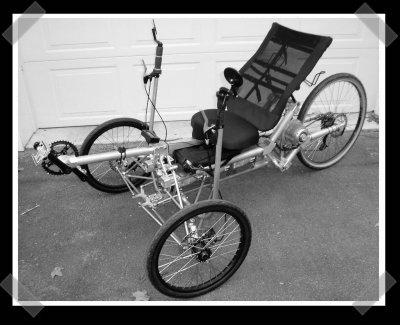This recumbent trike was built using parts from three salvaged bikes and without welding. These bikes are a bit easier on the back and neck than the traditional riding position. This one also allows for a shorter pedal crank which was a concern for the creator, [Barry Millman]. Not only did he do a fantastic job of making the thing, but he shared the project in verbose detail.
It’s a good build. It won’t win a prize for light-weight design as it includes a big chunk of plywood. But it is worth the weight hit if welding is not an option. For your viewing pleasure you’ll find a short parking lot test-drive of the finished recumbent after the break.
Oh, and if you want a more dangerous cycling build, try this over-under tandem.
Continue reading “Building A Recumbent Trike From Old Parts”
















